To download the app, visit: Library
This article gives details about app-based and table-based applications. While app-based data is generally the preferred method for displaying and saving work instructions information, table-based applications provide dynamic capabilities.
Process Structure
The options for storing content and data the Tulip work instructions apps are using the app records, Completions, or using Tables. Using these techniques can greatly impact your processes for procedures and tasks.
First, let’s go over the hierarchy of process, procedures, and tasks. These stages present different levels of granularity: the process refers to the entire system of instructions, procedures make up the larger steps, and tasks are the individual actions to complete the instructions. These levels have unique requirements due to the variance in granularity, meaning that the configuration for each should vary.
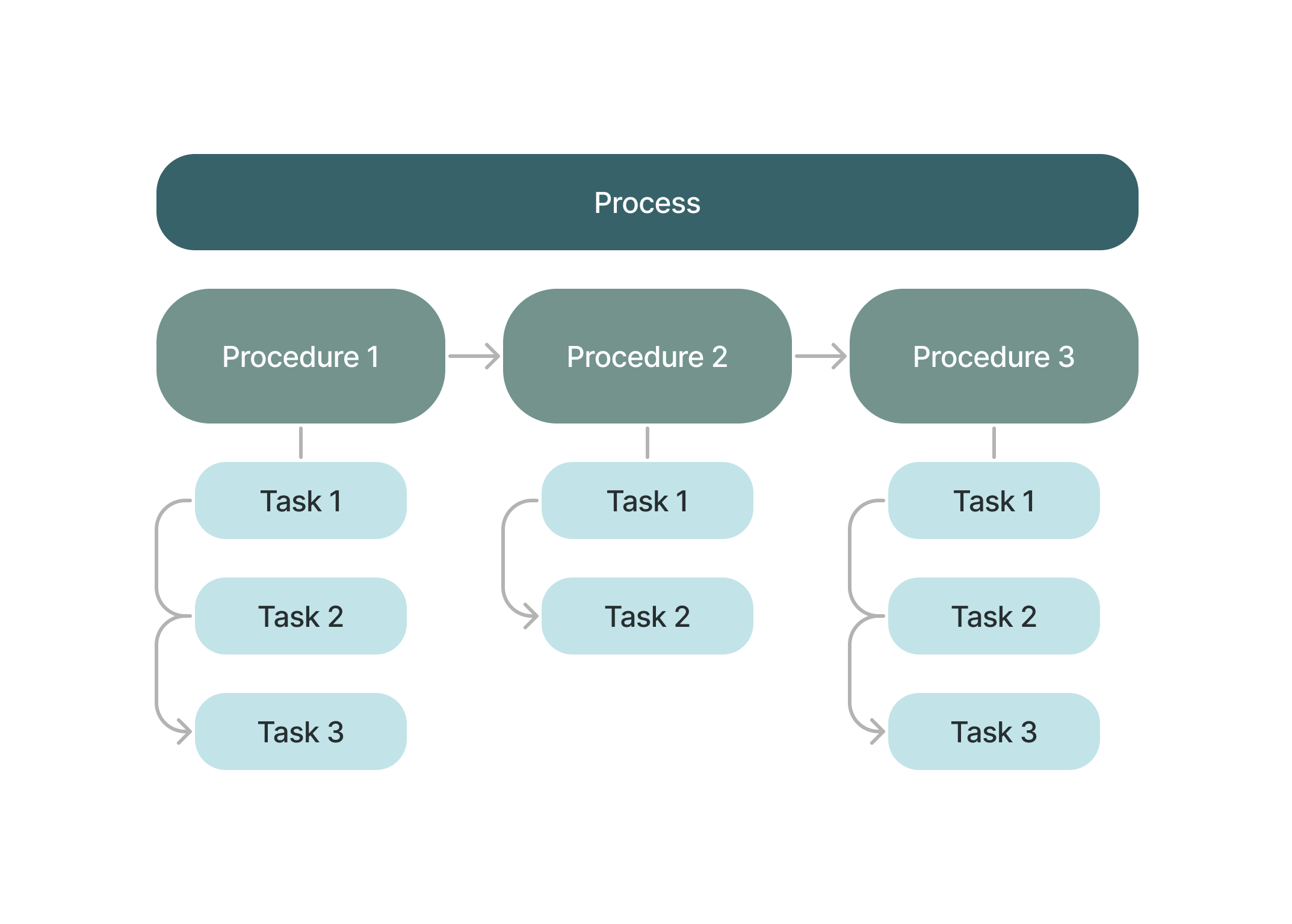
Keep this hierarchy in mind as we go through app-based and table-based differences, so you can note which is more configurable for your own process.
You can choose either an app-based model, a table-based model, or utilize a mix of both in an app. At Tulip, we recommend using an app-based approach for most of your needs; however, tables have important features to use in certain cases. First we’ll go over what makes up app-based and table-based applications so you know exactly how to replicate their functionality in your apps to maximize your process flow.
App-based Work Instructions
What does it mean to have an app-based application? It means that the instructions themselves live in the app architecture and are embedded in the steps. The instructions are static–not populating dynamically based on the user’s selections–and the information gathered from the app saves into completion data.
The App-based Work Instructions apps use Variables to store values based on the user’s selections. These values save when the app is completed. The app must have a complete button in order for these values to store in the completions tab, otherwise they won’t save and the data is lost. App-based data is immutable and records cannot be deleted, making the instructions and information absolute.
For example, in the One Task per Step application the instructions display via widgets on each step. The values save into variables in the app data and once the user completes the app, the completion records show the selected values made throughout.
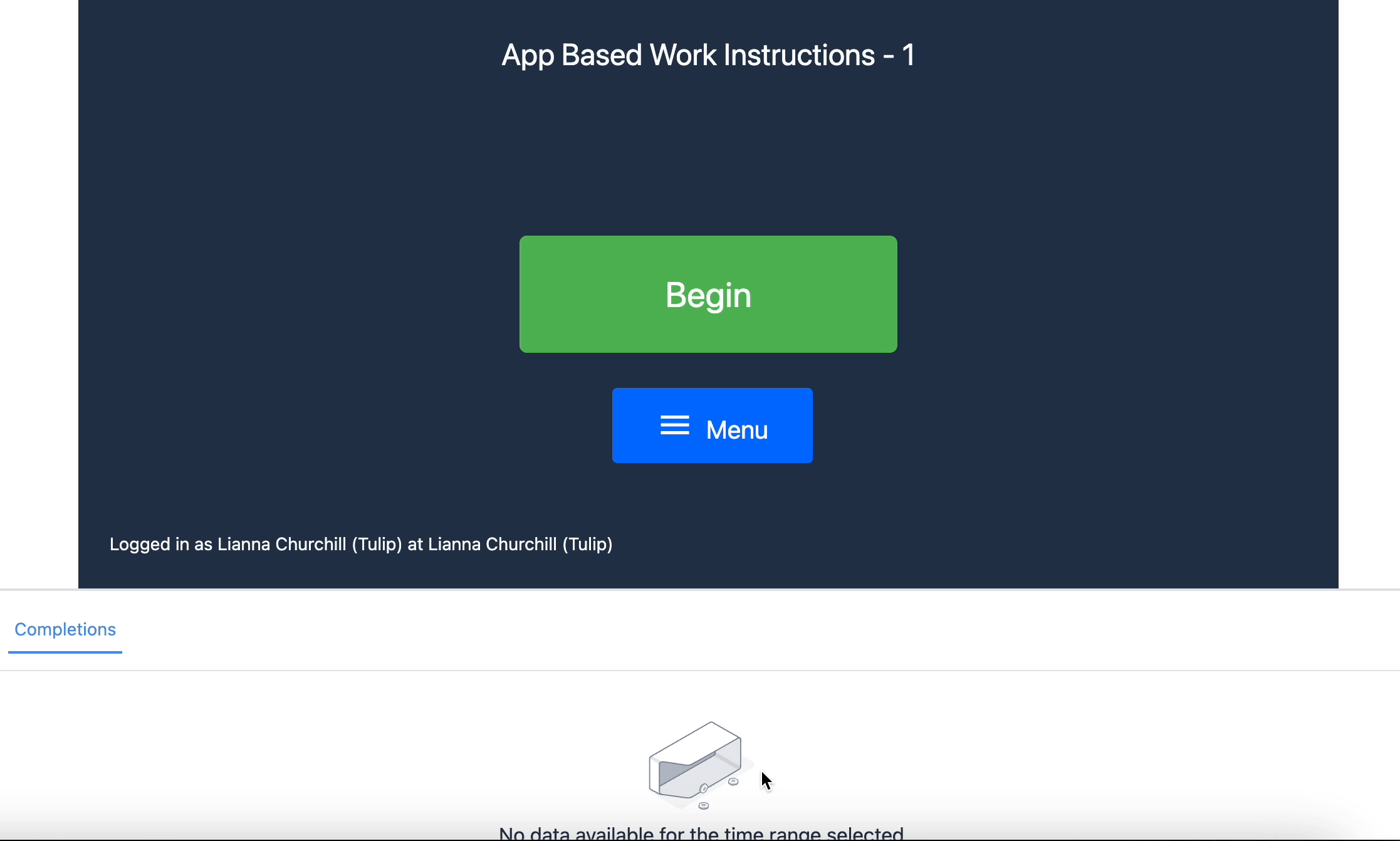
The purpose of app-based applications is to effectively and efficiently log data within an app and display all the information in a static and unchanging way.
Set Up
Setting up and configuring the app requires planning out the app layout and understanding the following criteria for maintenance:
- What types of completion records do you want to keep?
- How will the instructions be managed and updated?
- What do you want to do with the app data?
- How many apps do you need in order to comprise the full work instructions scope?
Answering these questions will give you the direction for your app architecture and layout, so you know exactly what information you need before you begin building your app.
For example, if you want to keep track of the procedure in a multiple-procedure app-based application with steps groups per procedure, selecting the procedure stores its name into a variable. Then, if you want to filter by procedures, simply use a filter based on the name of the variable. Any piece of information or attribute of the process should be a variable.
Tabled-based Work Instructions
Tulip recommends using an app-based solution for work instructions designed applications.
What exactly do table-based work instructions entail? It refers to the work instructions apps using tables to display the instructions. Tables are made up of labeled columns, Fields, and individual rows, Records. Records, organized by ID, contain information from various data types. The different data types in records are organized by the corresponding fields. These data types can include text instructions, images, videos, files, and more.
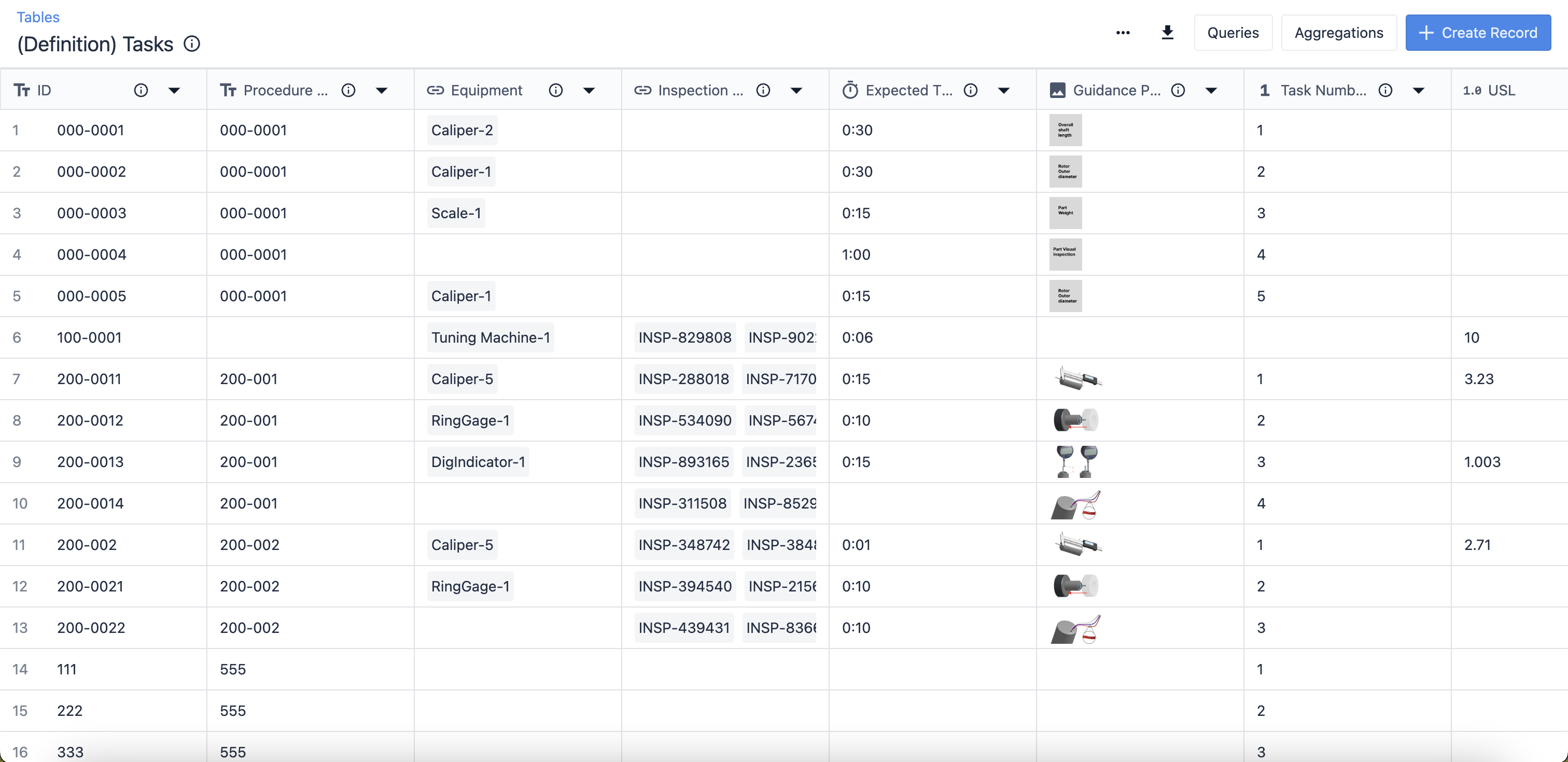
The Table-based Work Instructions apps use tables to store the individual instructions themselves. Each record can hold an image, text instruction, Interval, or even file to display in an application. From the tables, the instructions load into the app based on the selected procedure. This dynamic app path is based on the selection the user makes in the interactive table.
For example, in the Procedure Scroller app the user selects the procedure they want to follow and the tasks populate based on the selection.
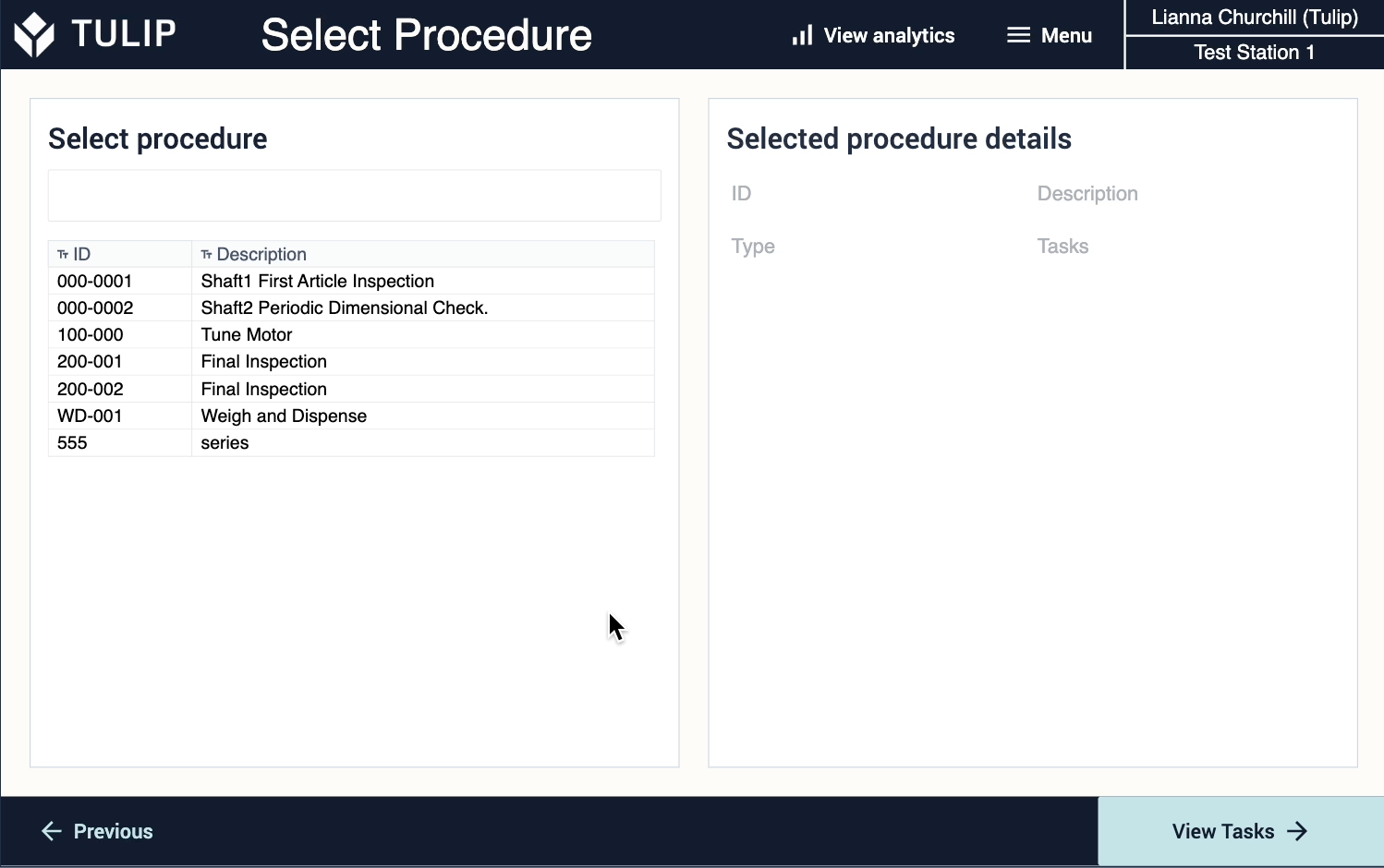
This app uses two tables to view and store data: a Procedure table and a Tasks table.
The purpose of table-based apps is to be able to organize data into distinct types and dynamically populate the data into apps. With tables, you can edit the data that appears in the app, without having to edit the app itself. The data created within the app goes into the tables, this means the data is also changeable. You can use a single app for all your instructions, making the process of updating the template easy and simple.
Set Up
Setting up and configuring tables takes a bit of planning before you can jump in. It’s important to consider and decide the following criteria:
- Where are you using tables in your app?
- Will the tables be used in multiple apps at once?
- How many tables do you need to create?
- Who will manage the information in these tables?
Understanding the size and scope of your app and how it relates to tables determines how you structure them.
For example, each piece of information involved in a work instruction should have its own field in a table, i.e. equipment, supporting photos, report PDFs, task number, etc. Furthermore, you may want to have multiple tables for different levels of information in a work instructions process. Both of these considerations affect how large your tables will be and how you configure them.
For information on how tables are set up in the work instructions apps so you can replicate the process, check out Table Structure for Work Instructions.
Further Reading
Understanding the difference between app-based and table-based applications is crucial to deciding your app design in accordance with your process. Read the Work Instructions Apps Overview for more information on the work instructions app suite and how to choose the right app for your needs.

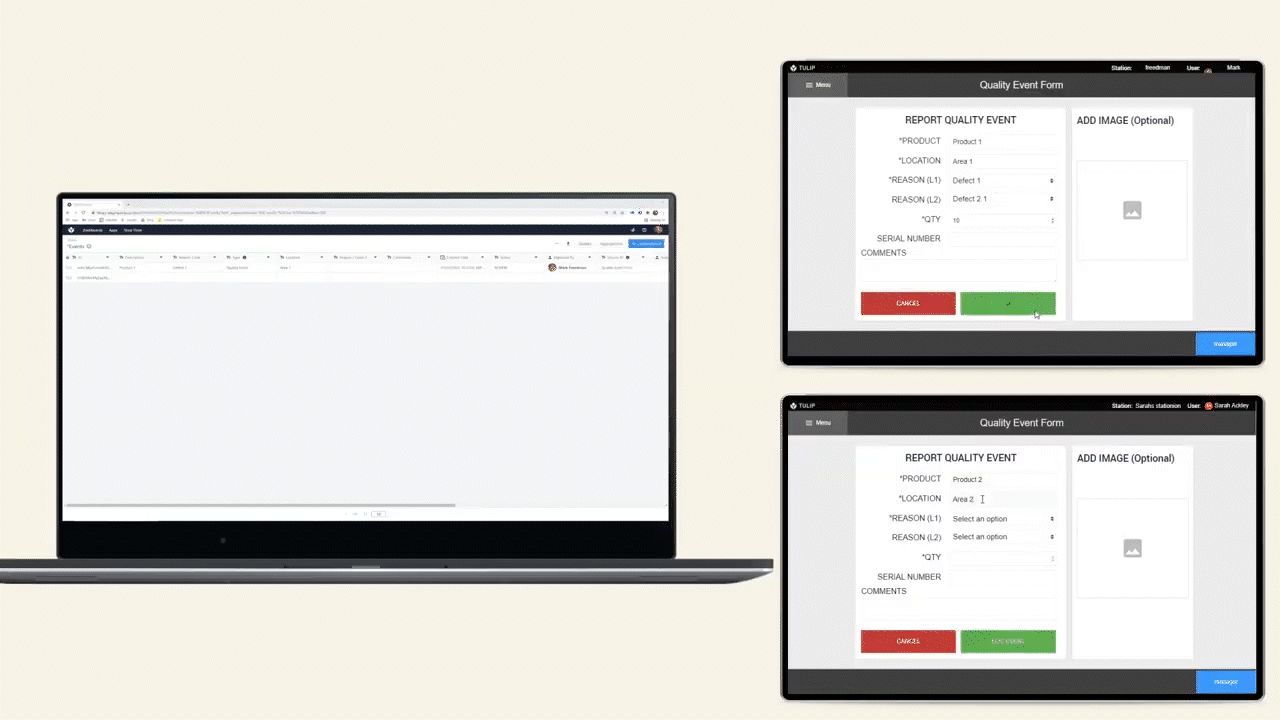
.gif)